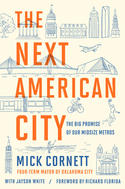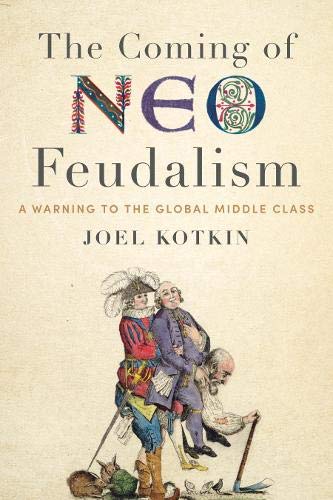In the late 1990s and the early Aughts, when the last Gen Xers and the first Millennials were launching into their adult lives, “Urban America” was a very different place. On many fronts, the choices young ambitious graduates had were fast becoming limitless, save on one key front: the cities where they could reasonably want to live. read more »
Housing
A Generation Plans An Exodus From California
California is the great role model for America, particularly if you read the Eastern press. Yet few boosters have yet to confront the fact that the state is continuing to hemorrhage people at a higher rate, with particular losses among the family-formation age demographic critical to California’s future. read more »
- Login to post comments
Beginnings, Middles, and Ends
I was recently invited to give a talk at a housing conference down in Los Angeles. Once again my fellow speakers engaged in the usual arguments. Aging Baby Boomers asserted that we need to keep building more 1957 style suburban homes on the edge of the metroplex because that’s what people want and can afford, particularly once they marry and have children. Then a group of Millennials sang their sad song of high prices and a lack of options in the places they really want to live. read more »
- Login to post comments
America Is Moving Toward An Oligarchical Socialism
Where do we go after Trump? This question becomes more pertinent as the soap opera administration seeks its own dramatic demise. Yet before they can seize power from the president and his now subservient party, the Democrats need to agree on what will replace Trumpism. read more »
- Login to post comments
Auckland: “A Vancouver of the South Pacific; Beautiful, but Utterly Unaffordable”
New Zealand’s Minister of Housing and Urban Development
- Login to post comments
The Great Re-homing: Why People Are Moving Back To Their Hometowns To Start Small Businesses
I have my gas station diet down pat. Coffee, water, bananas, nuts, hard-boiled eggs, and the occasional peanut butter cup indulgence. Ok, sometimes I also eat beef jerky. You have to learn these things when you spend 10,000 miles on the road talking to small business owners for a podcast. read more »
- Login to post comments
The Boom in Urban Housing Prices is Holding Back Economic Growth
Last year the New York Times ran a story on Ms. Sheila James, a 62-year-old woman who commutes two hours and 50 minutes each way between her home in Stockton, California, and her $81,000-a-year government job in San Francisco. read more »
- Login to post comments
The Battle for Houston
Over the last half-century, Houston has developed an alternative model of urbanism. As the New Urbanist punditry mounts an assault on both suburban growth and single-family homes, Houston has embraced a light regulatory approach that reflects market forces more than ideology. But last year’s Hurricane Harvey floods severely tested the Houston model. read more »
- Login to post comments
How We Lit The Fuse On The Population Bomb
We’ve been here before – concerns about our capacity to house a large population are not new. But lately, hostility to rapid rates of population growth is gaining traction. There have been calls for a population inquiry and former PM Hon Tony Abbott has called for immigration (and hence population growth) to be slashed. He joins a chorus of other voices, from business to community groups. Voters are pushing back against growth and political leaders are feeling the pressure. read more »
If New Zealand is to crack the problems of unaffordable housing, government here must look seriously at how the better parts of
This seems about the worst possible month to be suggesting that anybody should try to emulate anything going on in America. The place seems to be going mad in ways no longer funny to laugh at from very far away.
So it’s a bit of a shame that the best lessons on infrastructure financing and affordable housing come from a few places in the United States that have really figured things out. If the exact same lessons had come from Canada, or the UK, or Estonia, Infrastructure New Zealand would have an easier time marketing its latest report. read more »
- Login to post comments





















